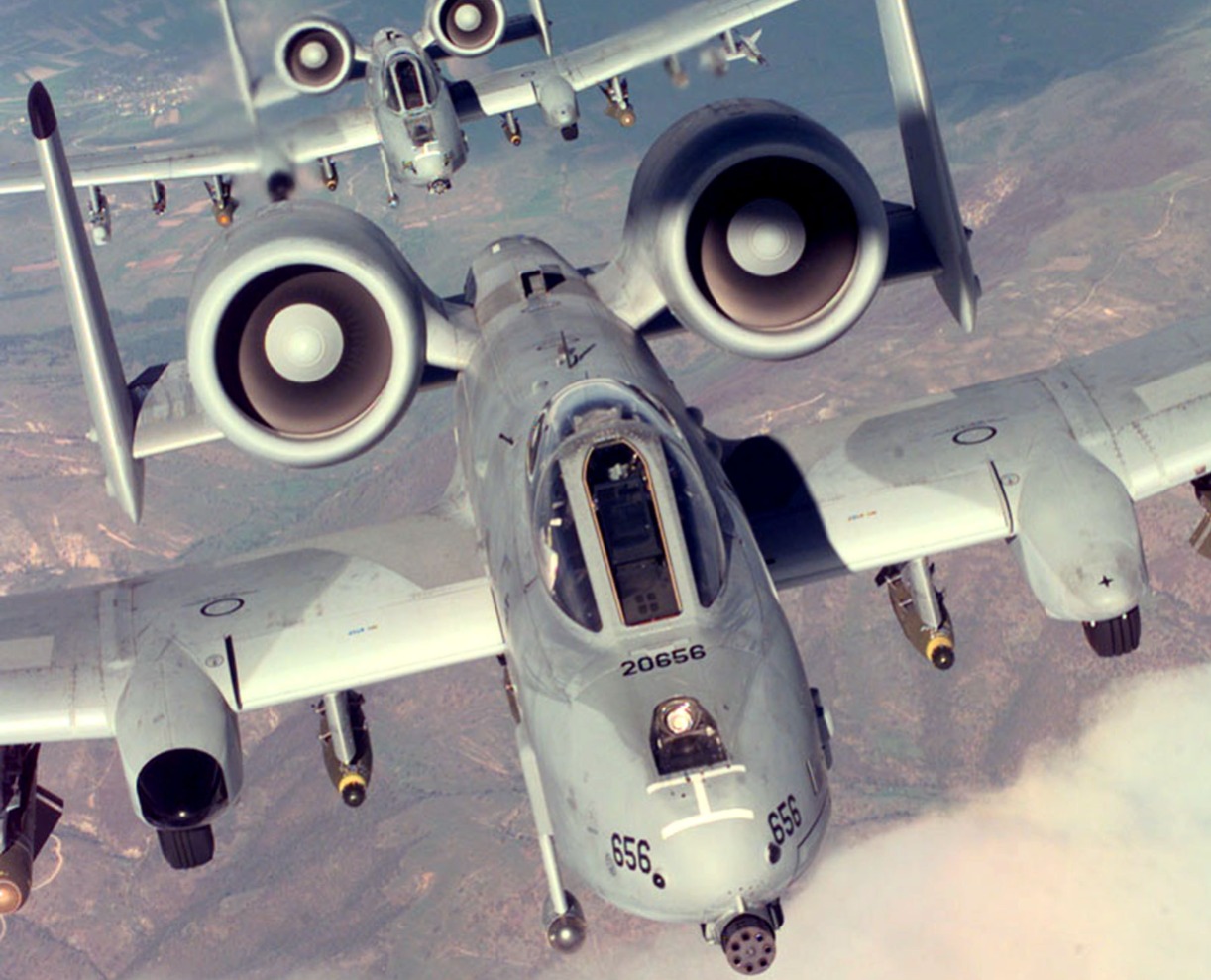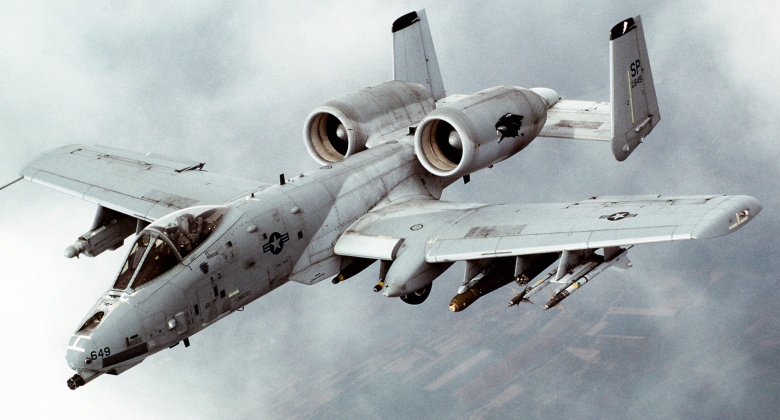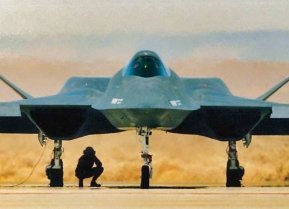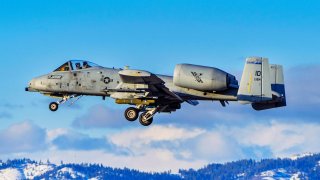A-10 Warthog: Why the Thunderbolt Is a 'Flying Tank' Legend
Many think of the A-10 as a flying tank so old that she should be retired to make way for room and budget for newer planes like the F-35. And yet, there are those that just won't let this plane head into the sunset.
Many think of the A-10 as a flying tank so old that she should be retired to make way for room and budget for newer planes like the F-35. And yet, there are those that just won't let this plane head into the sunset.
Meet the A-10 Warthog
On May 10, 1972, the Fairchild Republic A-10 Thunderbolt had its maiden flight. The development of the aircraft began in the early 1960s when the United States military was still relying on the Korean War-era Douglas A-1 Skyraider for its primary ground-attack aircraft.
The Skyraider was certainly a capable aircraft for its air, but by Vietnam, its age was showing. In fact, the aircraft was ill-suited to the jungle campaign, and as a result, the U.S. Air Force and U.S. Navy lost 266 A-1s in combat, largely from small arms fire.
Even before that point, Secretary of Defense Robert McNamara had called for the development of a tactical attack aircraft. Despite the more overt attractions of Mach 2 aircraft, the Air Force focused on the close air support (CAS) mission. It needed something that was a modernized Skyraider that could carry a heavy load of ordnance, had good endurance and could survive severe damage from ground fire.
Between 1963 and 1969, extensive studies gradually refined the specifications for the new aircraft, and several prototypes were considered. In December 1972, the Fairchild Republic A-10A Thunderbolt was deemed the winner, while GE was chosen to produce the aircraft's 30mm tank-busting GAU-8 gun, a powerful weapon that had a very high muzzle velocity that was twenty times that of the 75mm gun fitted to some B-25s in World War II.
In addition, the 30mm gun, which used rotating barrels, offered an unparalleled rate-of-fire for an aircraft weapon. Able to fire up to 4,200 rounds per minute, no attack aircraft in history has ever mounted a gun with the tank-killing capability of the GAU-8.
Introduction of the A-10 Warthog
Production of the A-10 Thunderbolt II began in 1972, and the aircraft officially entered service with the United States Air Force in 1977. The A-10s short takeoff and landing (STOL) capability permitted it to operate from airstrips close to front lines. Service at forwarding base areas with limited facilities is possible because of the A-10's simplicity of design.
It was first deployed during Operation Urgent Fury, the 1983 American invasion of Grenada, and provided air cover for the United States Marine Corps, but did not fire their weapons.

In fact, it wasn't until the Gulf War in 1991 that the aircraft took part in combat operations. A-10s successfully shot down two Iraqi helicopters with the GAU-8, and took part in numerous sorties against Iraqi Republican Guard units. Several A-10s were shot down by surface-to-air missiles, while nearly a dozen were hit by anti-air artillery rounds – yet the aircraft performed well enough that the Air Force abandoned an idea to replace the A-10s with a close air support version of the F-16 Fighting Falcon.
A-10 Wings Clipped?
Over the past two decades, the A-10 has been deployed to subsequent operations in Afghanistan, Iraq, and Libya. However, for the past decade, the Air Force has wanted to divest some or all of its remaining 281 A-10 Warthogs.
Supporters of the A-10 note that it offers excellent maneuverability at low airspeeds and altitude while maintaining a highly accurate weapons-delivery platform. The Thunderbolt II can loiter near battle areas for extended periods of time, are capable of austere landings, and operate under 1,000-foot ceilings (303.3 meters) with 1.5-mile (2.4 kilometers) visibility.
In addition, its wide combat radius and short takeoff and landing capability permit operations in and out of locations near front lines. Using night-vision goggles, A-10C pilots can conduct their missions during darkness, while Thunderbolt IIs are also equipped with a Night Vision Imaging Systems (NVIS), goggle compatible single-seat cockpits forward of their wings, Helmet Mounted Cueing Systems and a large bubble canopy that provides pilots all-around vision.

The aircraft's pilots are even protected by titanium armor that further protects parts of the flight-control system. The redundant primary structural sections allow the aircraft provides better survivability during close air support than the previous aircraft. The A-10, which has earned the moniker "Warthog," can survive direct hits from armor-piercing and high explosive projectiles up to 23mm. The aircraft's self-sealing fuel cells are protected by internal and external foam, while manual systems back up their redundant hydraulic flight-control systems – and permits pilots to fly and land when hydraulic power is lost.
Designed for the accurate delivery of ordnance at low altitude, the Fairchild Republic A-10 Thunderbolt became one of the most heavily armed, and armored plane in history.
New Lease on Life?
In March 2022, the Air Force announced that it had tested an A-10C Thunderbolt II loaded with GBU-39 Small-Diameter Bombs near Eglin Air Force Base (AFB), Florida. This integration of the GBU-39 on the A-10 is one of the major upgrades that were announced in 2019 as part of the A-10 Common Fleet Initiative.

This upgrade, which has been in development since 2020, will increase the weapon capacity of the A-10, which until now was limited to carrying only a single weapon on each pylon. By utilizing the BRU-61/A rack, the A-10 will be able to carry four SDBs on each weapon pylon, becoming essentially a "bomb truck" that can release these stand-off weapons to neutralize threats as far as fifty miles in the target area before starting to provide Close Air Support (CAS) to ground troops. This could allow the A-10s to remain a vital part of the Air Force's fleet well into the 2030s.
About the Author: Peter Suciu
Peter Suciu is a Michigan-based writer who has contributed to more than four dozen magazines, newspapers and websites. He regularly writes about military hardware, and is the author of several books on military headgear including A Gallery of Military Headdress, which is available on Amazon.com. Peter is also a Contributing Writer for Forbes.


